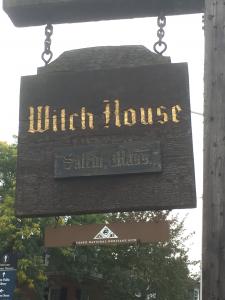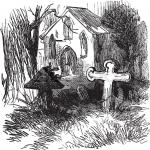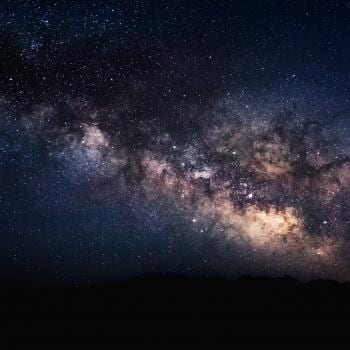The first thing you notice about Salem is that it looks like every old port city in New England. Lovely 1700’s colonial homes with cobblestone sidewalks line narrow streets. The harbor boasts beautiful views and some of the best seafood restaurants in the world. These days, there are shops, restaurants, museums, and quaint inns aimed at capturing the tourists’ imaginations (and dollars). As I parked my pickup truck, I had the fleeting thought that I could be on Cape Cod, or in Newport, Rhode Island, or Portsmouth, New Hampshire, or Portland, Maine. And this delighted me. What’s not to love about a historic New England port city?
The second thing you notice about Salem is all the witches.
*
I grew up in Massachusetts. For most of my life, the Salem Witchcraft Trials were the stuff of dry history lessons. Kids in other parts of the country get to see road companies of Broadway shows. We saw Arthur Miller’s The Crucible. Even worse was the fifth grade field trip to Salem–being dragged through the House of the Seven Gables and So. Many. Museums. My friends and I were totally bummed. Really, the Salem Witch Hysteria (as it was referred to in a seasonal story on Boston’s WBZ news radio) was an embarrassing piece of American history that we locals would rather have forgotten.
Then some folks figured out how to turn Halloween into a multi-billion dollar industry. Suddenly, Salem is “Witch City.” The tourist season extends beyond the summer, and is now dwarfed by the draw of the Witches of October.
Personally, I’m fascinated by the contrast.
On the one hand, there is the portrait in sepia: the collection of museums like the Salem Witch Museum, and the other historical sites. So many historical sites. Pantloads of history. These days, I’m a history geek and find the witch trials most compelling as a stark example of the rich and powerful abusing the less fortunate.
Then there is the proverbial neon sign of the touristy “Witch City,” events like the “Psychic Fair and Witches Market” happening at the local mall. There are souvenir shops loaded with postcards, t-shirts, witch’s hats and brooms. There is even a hipster vegan bakery. In a nod to Salem’s history as an international shipping port, there’s a lovely Asian imports shop crammed full of fans and statues and china pieces. A movie theater boasts midnight showings of the Rocky Horror Picture Show, documentaries on Halloween and on the witchcraft trials (and the new animated children’s film, Smallfoot). In the middle of the mall, there are booths that boast crystals and sage bundles here, velvet capes there, and a dozen or so folks looking like they came out of a Stevie Nicks video offer palm, tarot, and crystal ball readings at card tables.
This interests me too.
*
There is no place on the planet more beautiful than Salem on a clear, fall day. The harbor, quaint, historic neighborhoods, the great food, the museums (the Peabody Essex Museum is a world class museum boasting some of the finest exhibits of Asian art and culture in the world), the literary history (I now appreciate Hawthorne’s House of the Seven Gables and Arthur Miller’s genius) are all worth the trip.
All the evidence points to patriarchy, misogyny, and prejudice being the true cause of the Salem Witch brouhaha back in the early days of our nation, not otherworld magick. The gathered witches, herbalists, Wiccans, New Agers, and Neo-Pagans who call Salem home today have carved a different niche for themselves, though, in this modern seaside community. This place, where the ancient history collides with current practice, is worth exploring.
As I walked through the city, where centuries-old homes and other historic sites stand side-by-each with contemporary businesses and a state university, I couldn’t help but be reminded of other travels through other places that bring attention to the spiritual realm in the midst of the community—New Orleans, Rwanda, Dublin, that 100-year-old retreat center on Cape Cod. The air between the earth and the heavens is somehow thinner in those places. It’s palpable.
As I thought about that, I felt, for the first time, a connection with those Puritan women who lived in Salem hundreds of years ago. They struggled with some of the big questions I struggle with. They had the same day-to-day challenges of keeping their families fed and dressed and safe. They wrestled with their faith when it didn’t match the rigid expressions they were forced to practice.
I felt a kind of solidarity with all the women whose lives were lost in that dark season, when daring to survive was punishable by death, and with the women who, inspired by the old stories, gathered themselves here, today, to call themselves witches.
*
Kristen Allen is a proud-if-exhausted mother of three grown children, an avid-but-lazy bird watcher, a teacher of tinies and undergrads at a university lab school, and an occasional contributor to Sick Pilgrim. You can see how she wrestles with her faith, leaning on coffee (and gin), and her brilliant writing-partner and sister-friend, Mary Bishop over at their blog Made for Ordinary Time.












